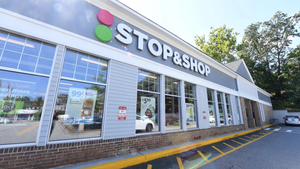Sales up sharply for chicken — in store and onlineSales up sharply for chicken — in store and online
More varieties keep mainstay meat category humming despite rising prices, shortages
September 1, 2022

TOP TAKEAWAYS
Dollar sales for chicken are up sharply, with relatively small volume decreases — sales for the 52 weeks ended July 10 totaled $14.5 billion, up 9.9% year over year
Chicken is experiencing very high inflation, combined with limited ability to promote. This means consumers are looking for ways to save even within chicken
Organic is a “monster trend,” especially among millennials who are active buyers of organic chicken. Organic comprises about 6% of category sales, up from about 2% five years ago
Chicken is proving to be an increasingly resilient revenue driver.
Despite price hikes, greater consumer interest in a wider variety of proteins, and supply shortages resulting in store out-of-stocks, dollar sales for chicken are up sharply, with relatively small volume decreases.
Indeed, chicken sales for the 52 weeks ended July 10 totaled $14.5 billion, up 9.9% year over year, Chicago-based market research firm IRI reported. Pound sales came in at 5.17 billion, down 2.3% for the period. The average overall price per pound rose 31 cents to $2.80.
“Chicken is typically a big go-to during recessionary times, given its favorable price per pound compared to some of the other big proteins,” said Anne-Marie Roerink, principal of 210 Analytics LLC, a San Antonio-based market research and marketing strategies firm, and preparer of the FMI-The Food Industry Association “Power of Meat 2022” report.
“However, chicken is experiencing very high inflation, combined with limited ability to promote, given the supply situation,” she said. “This means consumers are looking for ways to save even within chicken.”
Among meat product segments in the July Consumer Price Index, chicken had the highest increases in price inflation, up an unadjusted 17.6% year over year (YoY) and 1.4% month over month (MoM), compared with upticks of 7.2% and 0.4%, respectively, for the overall meat category, the U.S. Bureau of Labor Statistics reported. Within the chicken segment were gains of 15.9% YoY and 1.9% MoM for fresh whole chicken and 18.6% YoY and 1.1% MoM for fresh and frozen chicken parts.

Value-added selections are catching the eyes of shoppers and driving more chicken sales.
Economy and availability
Helping to sustain chicken sales activity is rising shopper interest in a broader array of parts. While pound sales of breasts — the most popular chicken part, with a 57.6% category share — declined 4.9% over the last year, leg and thigh volumes rose 1.5% and 1%, respectively, as more consumers embraced lower-priced dark meats, said Chris DuBois, senior vice president of the protein practice at IRI.
Shoppers’ focus on cost-cutting is spurring interest in chicken legs, which have an average price per pound of $1.26, up just 13 cents from a year earlier, IRI reported.
Chicken thighs, meanwhile, have an average price of $2.41 a pound, a 30-cent uptick. Chicken breasts and wings carry an average per pound price of $3.65 and $3.67, up 42 cents and 62 cents, respectively, over the last year.
Grocery retailers also are helping shoppers manage their budgets by offering more lower-priced bulk packaging options, along with wider selections of thighs and ground chicken, according to Roerink.
“There is strong demand for family packages to save and use over time,” she said.
Still, retailers must overcome periodic out-of-stocks if they are to maximize revenues, DuBois noted, adding that the supply snags stem from such factors as avian flu-reducing flock sizes, higher feed and freight costs, labor issues and stronger market demand.
“There is tightness everywhere, so nobody is getting all the chicken that they want,” he said.
Serving up more value
At the same time, grocers must “get the pricing right” and feature chicken in their week-ly circulars, as this protein option remains a major competitive differentiator and store magnet, DuBois pointed out. Merchandisers also will benefit from offering an attractive range of value-added selections, he said.
“It is important to provide innovative flavors to Millennials who are looking to try new things,” DuBois stated.
Value-added chicken is a major focus at PCC Community Markets, a chain of 16 Seat-tle-area stores. The selections have generated double-digit sales increases over the past three years and include top sellers such as marinated and seasoned chicken breasts, chicken skewers and wings, said David Sanz, meat and seafood merchandis-er at PCC. Newer items include Greek marinated chicken breast skewers and lemon garlic chicken breast skewers.
In addition to the lower prices of conventional selections versus other proteins, chicken brings more consumer comfort in meal preparation, Sanz reported.
“Most people are confident when cooking chicken and don’t have to think too hard about how to do so,” he explained. “Many other proteins have a perception of being difficult to cook or rather daunting to prepare.”

Supply issues are making it more difficult for retailers to spotlight chicken in promotions.
Trends
PCC also is seeing stronger online sales of chicken, Sanz said, noting that e-commerce “is key to driving sales.”
According to IRI’s DuBois, the average chicken customer purchases almost 20% more selections online. “Chicken is winning the e-commerce battle, and that will continue over the next 10 years as it makes huge inroads and changes the way consumers shop,” he said.
Merchandisers also are benefitting from millennials strong interest in chicken products. This shopper segment is the most likely to purchase chicken and will exceed the buy-ing power of baby boomers over the next decade, DuBois said. Millennials already are buying 20% more chicken than the average U.S. household. What’s more, they over index in their purchases of dark chicken meat and underindex in their purchases of beef and other proteins.
“That indicates that chicken, long term, is primed to grow even more relative to other proteins,” DuBois said.
Millennials also are active buyers of organic chicken, which comprises about 6% of category sales, up from about 2% five years ago.
“Organic is a monster trend and is growing faster than the regular chicken category,” DuBois said. “It is a powerful part of the premium chicken segment, and purchasers are willing to pay the higher prices. Organic also is a big for bringing younger shoppers into stores, and they are the ones that will generate larger basket sizes.”
About the Author
You May Also Like






